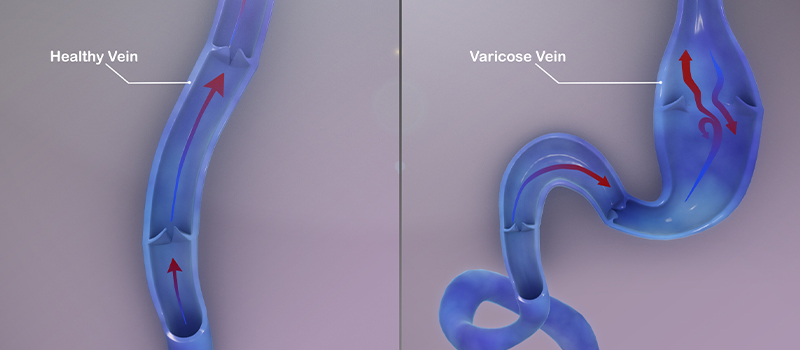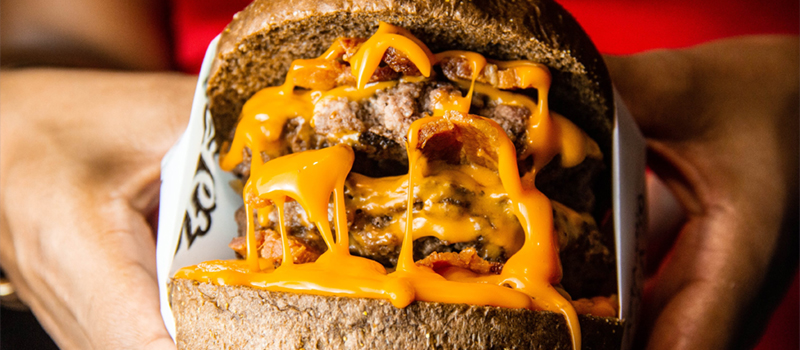About one in every four adults in the US has varicose veins. Varicose veins are swollen, twisted, and enlarged veins. They are dilated and overfilled with blood, raising them noticeably from the surrounding skin surface. Often, they are red or bluish-purple. While varicose veins can happen
anywhere on the body, they are more common in the legs.
The other name for varicose veins is varicosities. Spider veins are a mild variation of varicose veins and are more common. In most cases, varicose veins do not cause much concern beyond cosmetic issues. However, for some people, they may result in discomfort and regular aching pain.
In rare cases, varicose veins can also lead to serious medical complications.

Causes
One of the main causes of varicose veins is weak and damaged nerves. Veins carry blood from the rest of the body to your heart, and they have valves to prevent backflow. That’s because they have
to work against gravity, especially when coming from your legs. If the vein valves are not working properly, blood flows backward, pooling in the veins, which causes them to stretch and twist.
Anything that makes the veins or makes them less flexible also causes valve failure.
Risk Factors
Medical experts are yet to find the precise cause as to why veins stretch. However, they have identified factors that increase one’s risk of developing varicose veins; these include;
Age: Age increases wear and tear in the valves, and with time they begin allowing some backflow of blood in the veins where it starts collecting.
• Sex: Women are at a higher risk of developing varicose veins. They experience more hormonal changes, including around their periods, during and after pregnancy, menopause, etc. Female hormones relax the venous walls increasing the risk for backflow. Hormone
treatments like birth control pills further increase the risk of varicose veins.
• Pregnancy: During pregnancy, the blood volume in your body increases to support the fetus as it grows. Unfortunately, this increased volume can have the side effect of enlarging veins in your legs.
• Family: If there is a history of varicose in your family, there is a higher chance that you may develop them too.
• Obesity: The extra weight adds pressure on your veins, eventually leading to valve damage.
• Spending a long time seated or standing: spending a lot of time in the same position
prevents your blood from flowing well.

Symptoms
Typical varicose veins will not cause pain. The obvious symptoms are their appearance which has aspects like;
• You notice blue or dark purple veins on your skin surface.
• Cord-like, bulging, and twisted veins appear.
Sometimes the varicose veins may have painful symptoms, including;
• A heavy and aching feeling in your legs.
• Skin discoloration around the affected veins.
• You feel extra pain after sitting and standing for a long time.
• You experience cramping, burning, and throbbing pain in the lower legs.
When to see a doctor
If you are concerned with how your varicose veins look or home self-care measures have not provided pain relief, you should see a doctor. In rare cases, varicose veins can cause complications
like ulcers, bleeding, and blood clots, so it helps to have a doctor check them.
Fortunately, you do not need to go far to get expert medical advice.



